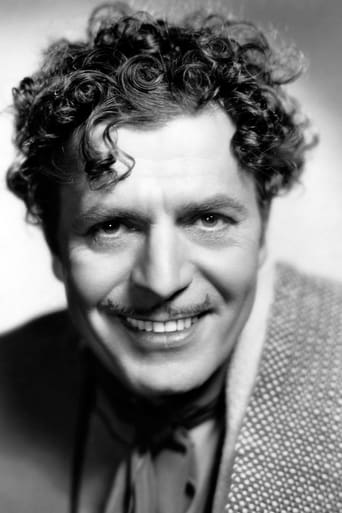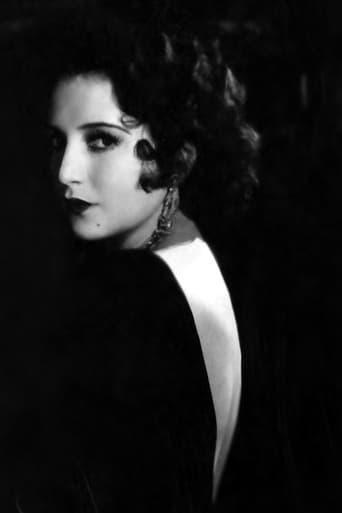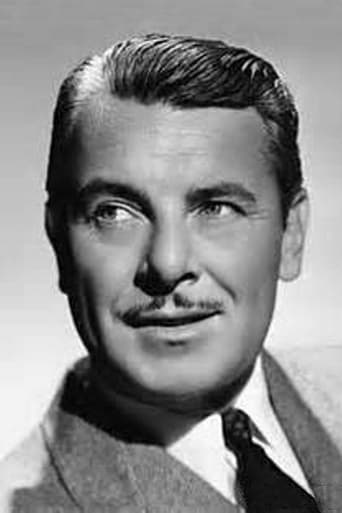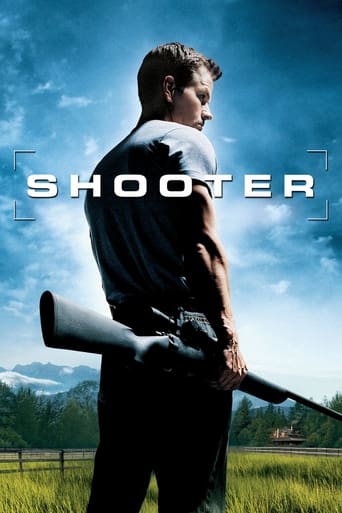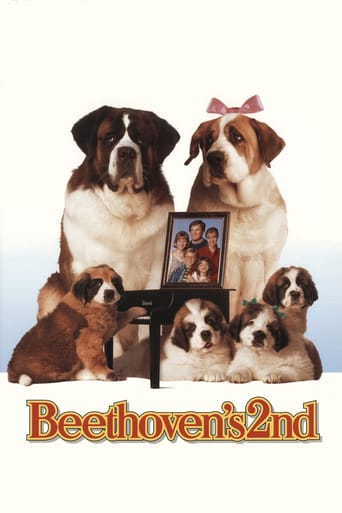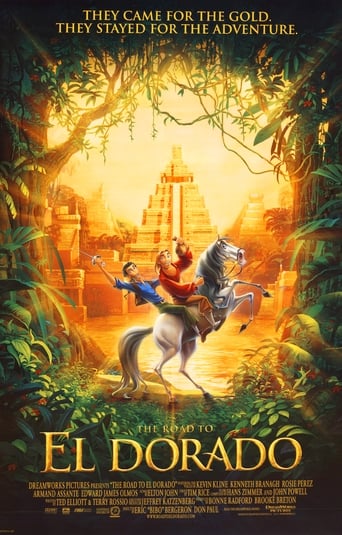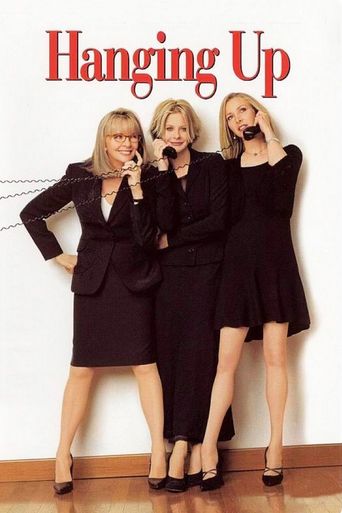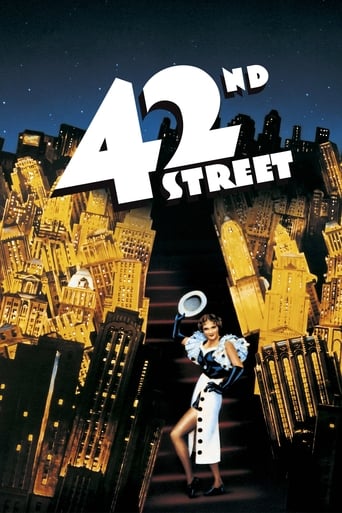
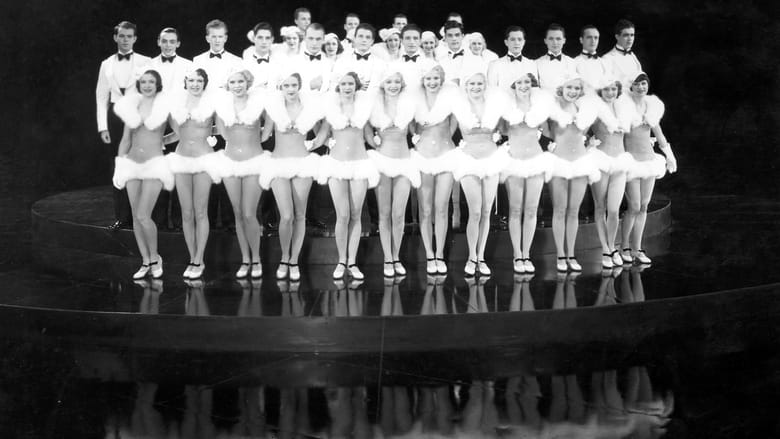
42nd Street (1933)
A producer puts on what may be his last Broadway show, and at the last moment a chorus girl has to replace the star.
Watch Trailer
Cast


Similar titles
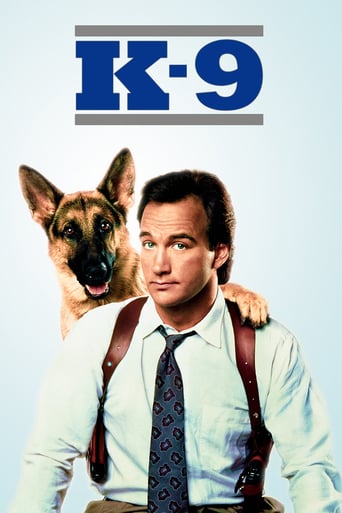
Reviews
42nd Street is one of those films that I had often heard about, yet failed to see until far too late in my cinematic journey. I am certainly glad that I finally indulged in 42nd Street because it's simply brilliant. Lloyd Bacon, not Busby Berkeley as I had incorrectly thought, directed 42nd Street in 1933. Lloyd Bacon was a true workhorse for Warner Brothers, directing over 100 films between 1920 and 1955. Bacon worked with such greats as Bette Davis, Charles Chaplin, Humphrey Bogart, and James Cagney, just to name a few. Bacon's body of work is massive, and though he is only responsible for a few classics, 42nd Street among them, he consistently created works that have spanned the decades and are standouts of those who starred in them. This isn't simply a Lloyd Bacon appreciation post, though he has more than earned one, but I felt it necessary to highlight the career of this largely forgotten director. I'm sure I'm not the only one to incorrectly attribute 42nd Street to Berkeley instead of Bacon, and Bacon deserves his due. Upon investigation, I had seen many more films by Lloyd Bacon than I ever realized, further cementing his status, in my mind anyway, that he is a stable director of classic Hollywood. 42nd Street, starring Warner Baxter and Bebe Daniels follows the plight of a Broadway film director pouring his heart into what could be his final production when the star must be replaced by a chorus girl at the last minute. It is no wonder why 42nd Street remains so revered today as it was at the time of its release, the plot is infused with wonderful chemistry between characters, and obviously sprinkled with brilliant dance numbers captured by genius overhead shots. 42nd Street is as much a feast for the eyes as it is for the soul.Julian Marsh (Warner Baxter), the most brilliant director of his time has been tasked with the production of a new show, despite his health. Unbeknownst to those around him, Julian has suffered a nervous breakdown and has been warned by his doctors to not take any shows on until he is better equipped to handle the immense stress that accompanies these productions. Despite this warning, Julian decides to proceed with the production, determined to deliver a promising display, even if it's his last. The show has been funded by a wealthy senior who is in love with its star, Dorothy Brock (Bebe Daniels). Dorothy has not responded to his advancements because she is still in love with her former dance partner, Pat Denning (George Brent). Dorothy is used to being in the spotlight and has developed quite an attitude of superiority, making her fall from grace all the harder when she breaks her ankle the night before the show is to premiere. Peggy Sawyer (Ruby Keeler) a chorus girl who has caught the eye of Billy Lawler another member of the production, is deemed the perfect replacement. With only a night to prepare, Peggy commits herself completely to rehearsals hoping to catapult the show, and her career, to greatness.The camera work of musicals from the 1930's is captivating no matter how many films of that era I've seen. The low angle shots and the overlays are sensational at immersing the audience in the performances. Bacon seems to place heavy reliance upon steady cam and tracking shots, an interesting choice that paid off ten-fold in creating a visual masterpiece. The camera acts as a guide for the audience, taking us on a journey through both the backstage antics and on-stage perfection seen in 42nd Street. All the dancing was incredible but that final dance number was a gift to us all. 42nd Street is a classic, and one that I am immensely thankful to have finally seen.
This has it's a lot of fun moments, including 15 minutes worth of terrific, over-the-top Busby Berkeley dance numbers, some snappy, sexy pre-code dialogue, and impressive early use of crane shots.Yes, it's mostly awkwardly acted. And the whole thing is a string of clichés from start to finish. But, this film helped establish those clichés, and is pretty darn enjoyable in a corny, silly way.Many critics consider it a classic, and it is indeed important in Hollywood history.That said, I can't quite bring myself to say "classic", but I did smile a lot, especially on 2nd viewing.
Yes, this was the musical hit that precipitated a string of musicals over the next few years, all of which features a series of dancing or marching-oriented productions choreographed by Busby Berkeley, along with some purely singing numbers, all which features songs by the Harry Warren-Al Dubin team, sometimes with other tunesmiths included, all of which featured Dick Powell as a major character and singer, usually paired romantically with Ruby Keeler, who often sang and/or danced here and there. Often included other female stars or supporting actresses, such as Ginger Rogers, Joan Blondell, Una Merkel or Bebe Daniels, and often included a name non-musical dramatic male star(Warner Baxter, in the present case), listed in the credits above Powell. Commonly included character actors, such as jovial Guy Kibbee, cigar-chomping Ned Sparks, and/or Hugh Herbert.This was Ruby Keeler's first film, and she is featured as a singer and/or dancer in several scenes, her singing and dancing gradually dwindling in subsequent films, until she is totally absent in "Gold Diggers of 1935"....Bebe Daniels, already an established star in late silent and early talkies, is cast as an established singing and acting star(Dorothy) for the show being rehearsed through most of the film. However, the day before the show's opening, she breaks an ankle in an altercation with Ruby, plus has a quarrel with the show's financial backer(played by Guy Kibbee), who is having an affair with her. Ginger Rogers convinces a reluctant producer(Warner Baxter, as Marsh) that the seemingly unpromising Ruby is a better choice than her to train to take Dorothy's place. Ruby works out fine in the show, singing and dancing in 2 of the 3 big productions. Ginger Rogers and Una Merkel are cast as among the wanna-be chorus girls for Marsh's show, along with novice Ruby, whom they take under their wing, for some reason. Ginger mostly comes across as a cynical smartass, pretending to be a monocled sophisticate. However, late in the film, she gets to sing a bit in "Shuffle Off to Buffalo", and recommends Ruby, rather than herself, as a potential star in these productions. Her main claim to fame in this film series would occur in the following film : "Gold Diggers of 1933), when her face fills the opening screen, singing "We're in the Money". Of course, she would then be paired with Fred Astaire, in a series of RKO musicals.Teenager Toby Wing is the 'knockout' blond whom Dick Powell sings to and romances in the "Young and Healthy" production. Unfortunately, Hollywood would mostly limit her film roles to similar brief 'cheesecake' appearances, while she was pursued by many men, finally choosing a middle-aged aviation pilot, beginning a happy 44 year marriage.Although Ruby and Powell were paired with others as their romantic partner in the first two productions, offstage, they were warming up as a pair, and would be featured as a pair in the parting scene for the last production, suggesting a future together in the next film.The format established for the big productions in this film would be mostly followed in all of the subsequent films in this series through 1935. In all cases, 2 or 3 big productions dominated the last portion of the film. Only in "Gold Diggers of '33" was one of these productions shown in the middle of the film, instead of with the others near the end. Also, an extra, shorter, dance-oriented production was included earlier in the film in "G.D. of '33") and "Footlight Parade". Typically, as seen in this film, the first of the 3 big productions minimally incorporates signature Berkeley choreography elements, featuring an upbeat romantic theme. The second production usually incorporates most of the signature Berkeley creative patterns of dancers, often including counter rotations, overhead shots and kaleidoscopic changing patterns, creative film manipulations, and special effects. This is well illustrated in the second part of the "I'm Young and Healthy" number. The last production typically begins with some seamy scene: in this case, the meeting of NYC high life and low life at 42nd street, followed by the dominance of mass formations of dancing or marching, either by military units or,as in the present case, a large troop of dancers. Check out "Dames", and "Gold Diggers of 1935", as well as the afore mentioned "G.D. of '33", and "Footlight Parade", to see how well the productions in these films fit the pattern I just outlined!Warner Baxter was a popular leading man during the late silent era and early talkie period, rather reminding me of the later Vincent Price. Here, his character is always worried about putting on a super-popular stage show, as his last show before retiring, having been a dominant Broadway producer, bankrupted by the stock market crash. This gets wearing after a while. Of the subsequent films in this series, only "Footlight Parade", with James Cagney" in his place, puts similar major emphasis on backstage dance rehearsal scenes, again, which soon gets wearing.The Warren-Dubin songs for the productions, along with the stand alone ""You're Getting to Be a Habit With Me" , sung by Bebe, are all good. However, it lacks probably the 2 most enduring 'keepers' in this film series: "I Only Have Eyes for You", and "Lullaby of Broadway". Harry and Al briefly appear in one scene.
My observations: Let's hear it for the dancers. I am a tap dancer. All the boo hoo about Ruby's tap dancing is absurd. She was a star, and you are not. In the 42nd street title dance sequence, she is tap dancing in what we of modern tap dance styles call "rhythm tap", in which the dancer dances closer to the ground and may even pitch a little forward on the toe taps. The old style of tap dance is called "Broadway tap", where the woman is up on the higher heeled tap shoes and the carriage is held higher and posture more erect. As far as Ruby's "clumsy" dancing, that is also absurd. She was dancing in flat tap shoes, whereas when she and other women danced in higher heeled tap shoes they more tended to "dance on air". IMO, high heeled tap shoes are more elegant and sexy. I have tap danced in both types.Furthermore, most of the time you only saw women tap dancing in the higher heeled tap shoes, anyway, ala Ann Miller, Ginger Rogers, Eleanor Powell, Marge Champion, et al. Flat tap shoes ala 42nd Street number by Ruby Keeler always make a louder, stronger tap sound. They are what the men wear. I mean, did you ever see movie men tap dance in high heeled tap shoes? Additionally, notice other early tap movies. Old fashioned stories such as Shirley Temple (a child, of course), wearing her long dresses while tapping in flat tap shoes without much sound: tap's early days were done with wooden taps; metal taps came along much later. Lots of tap movies done with old wooden taps didn't have much sound. As a matter of fact, in tap movies the sound was added later; there were no microphones on the tap shoes or on the floors. This is why, I think, that upon seeing old tap movies today I can hear many more taps than the dancer could possibly dance in the time depicted.Further, high heeled tap shoes have smaller taps in general. The toe taps can be smaller than on the flat tap shoes, or what I call the men's tap shoes. A big man has gigantic toe taps. The high heeled women's tap shoes have tiny, little heel taps, that don't make much sound.More observations about this film: Julian Marsh reminds me of Florenz Ziegfeld. After the 1929 Stock Market Crash and ensuing Great Depression, Ziggy was bankrupt and in ill health, and later passed away, his wife Billie Burke going back to work to pay his bills (witness her daffy characters in some movies plus her later blockbuster Wizard of Oz).Julian Marsh was a desperate, formerly on top Broadway producer, in ill health and who I feel had a terminal illness diagnosis from his physician on the phone earlier in the film.1933 was six years after the 1927 Jazz Singer sound debut. 1933 was in The Great Depression. I thought that the film 42nd Street did very well, considering these things. Additionally, in Singin' in the Rain, 1951, it shows how early sound films had problems with production values such as microphones. I like 42nd Street. It still gets people interested in tap dancing.Broadway also fared badly during and after World War One. Audiences stayed away, men were sent off to war, shows closed, bankruptcies abounded. In my opinion, wars and economic downturns affect Broadway. There are some success stories, however. During World War Two, Broadway fared well with dancing musicals such as Oklahoma and Carousel; they both had ballet dances included in the storytelling.Broadway is still here. Musicals still abound. Silent movies, sound movies and television never killed Broadway. Movies and TV preserve actor's/dancers'/singers' performances, yes, but even those -- as they age -- are subject to faulty and expensive preservation techniques.Viva La Broadway Show, and filmed depictions thereof.10/10


